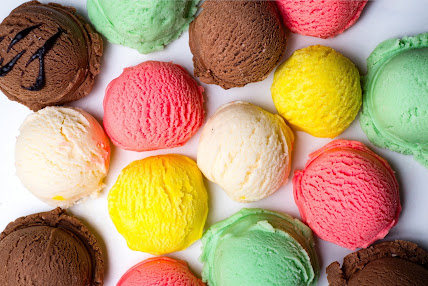Around the world, different cultures have developed unique versions of ice cream, suiting the product to local tastes and preferences.
The most traditional Argentine helado (ice cream) is very similar to Italian gelato, in large part due to the historical influence of Italian immigrants on Argentinian customs.
Per capita, Australians and New Zealanders are among the leading ice cream consumers in the world, eating 18 litres and 20 litres each per year respectively, behind the United States where people eat 23 litres each per year.
In China, besides the popular flavours such as vanilla, chocolate, coffee, mango and strawberry, many Chinese ice-cream manufacturers have also introduced other traditional Chinese flavours such as black sesame and red bean.
In Greece, ice cream in its modern form, or pagotó (Greek: παγωτό), was introduced in the beginning of the 20th century.
India is one of the largest producers of ice cream in the world, but most of its ice cream is consumed domestically. One of their most well-known ice creams is the kulfi available in both usual and local flavours like mango, rose, badam (almond), strawberry, kesar (saffron), pistachio, chocolate and can contain nuts, rose petals, saffron stalks, and pieces of other sweets like rabdri and gulab jamun.
Golas are summer treat consisting of shaved ice packed into a popsicle form on a stick and soaked in flavoured sugar syrup, a popular choice being kala khatta, made from the sweet and sour jamun fruit.
In Indonesia, a type of traditional ice cream called es puter or "stirred ice cream" is made from coconut milk, pandanus leaves, sugar—and flavors that include avocado, jackfruit, durian, palm sugar, chocolate, red bean, and mung bean.
In Iran, fālūdeh (Persian: فالوده) or pālūde (Persian: پالوده) is a Persian sorbet made of thin vermicelli noodles, frozen with sugar syrup and rose water. The dessert is often served with lime juice and sometimes ground pistachios.
Italian ice cream, or gelato as it is known, is a traditional and popular dessert in Italy. Much of the production is still hand-made and flavoured by each individual shop in "produzione propria" gelaterias. Gelato is made from whole milk, sugar, sometimes eggs, and natural flavourings. Gelato typically contains 7–8% fat, less than ice cream's minimum of 10%.
Sorbetes is a Philippine version of common ice cream usually peddled from carts by peddlers who roam streets in the Philippines. Despite the similarities between the name sorbetes and sorbet, sorbetes is not a type of sorbet.
In Spain, ice cream is often in the style of Italian gelato. Spanish helado can be found in many cafés or speciality ice cream stores. While many traditional flavours are sold, cafés may also sell flavours like nata, viola, crema catalana, or tiramisu. In the 1980s, the Spanish industry was known for creating many creative and weird ice cream bars.
Dondurma is the name given to ice cream in Turkey. Dondurma typically includes milk, sugar, salep, and mastic.
In the United Kingdom, 14 million adults buy ice cream as a treat, in a market worth £1.3 billion (according to a report produced in September 2009).
In the United States, ice cream made with just cream, sugar, and a flavouring (usually fruit) is sometimes referred to as "Philadelphia style" ice cream. Ice cream that uses eggs to make a custard is sometimes called "French ice cream". American federal labelling standards require ice cream to contain a minimum of 10% milk fat. Americans consume about 23 litres of ice cream per person per year—the most in the world. According to the NPD Group, the most popular ice cream flavours in the U.S. are vanilla and chocolate with a combined market share of 40% as of 2008.
In Syria there's the traditional ice cream called Booza. it's made of frozen dairy with mastic and sahlab (orchid flour), giving it its distinctive stretchy and chewy texture.
Read more, here.

.jpg)





